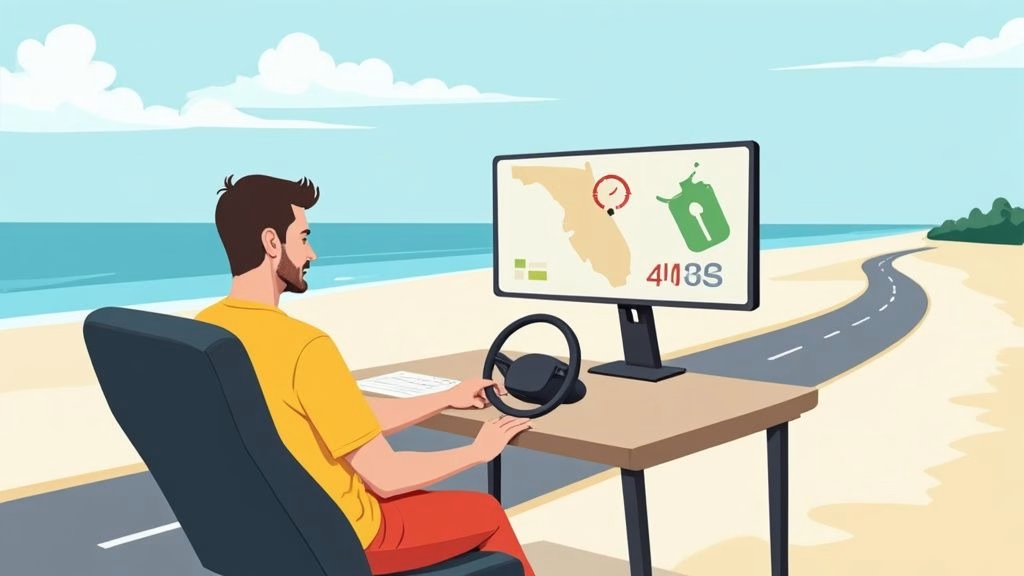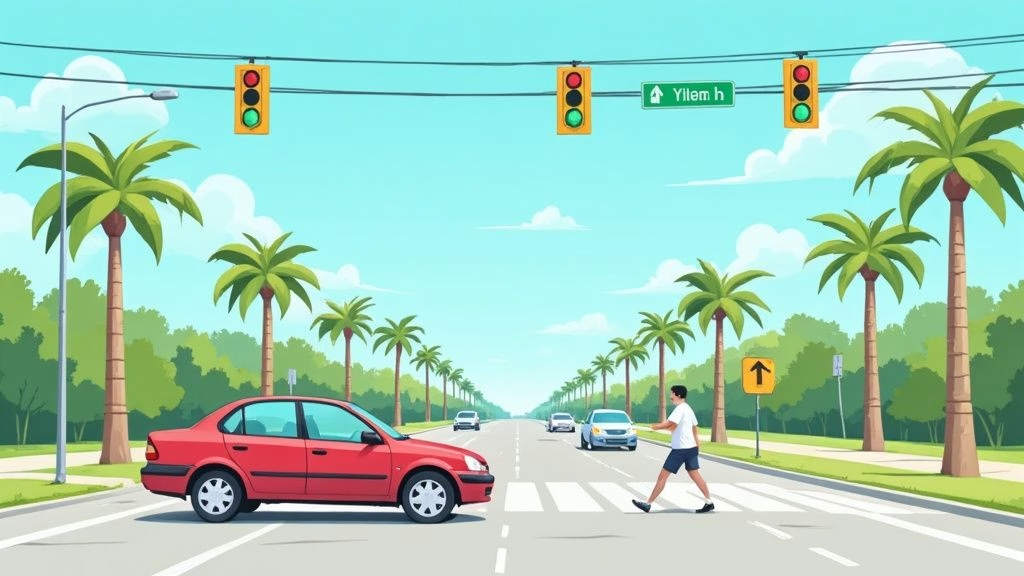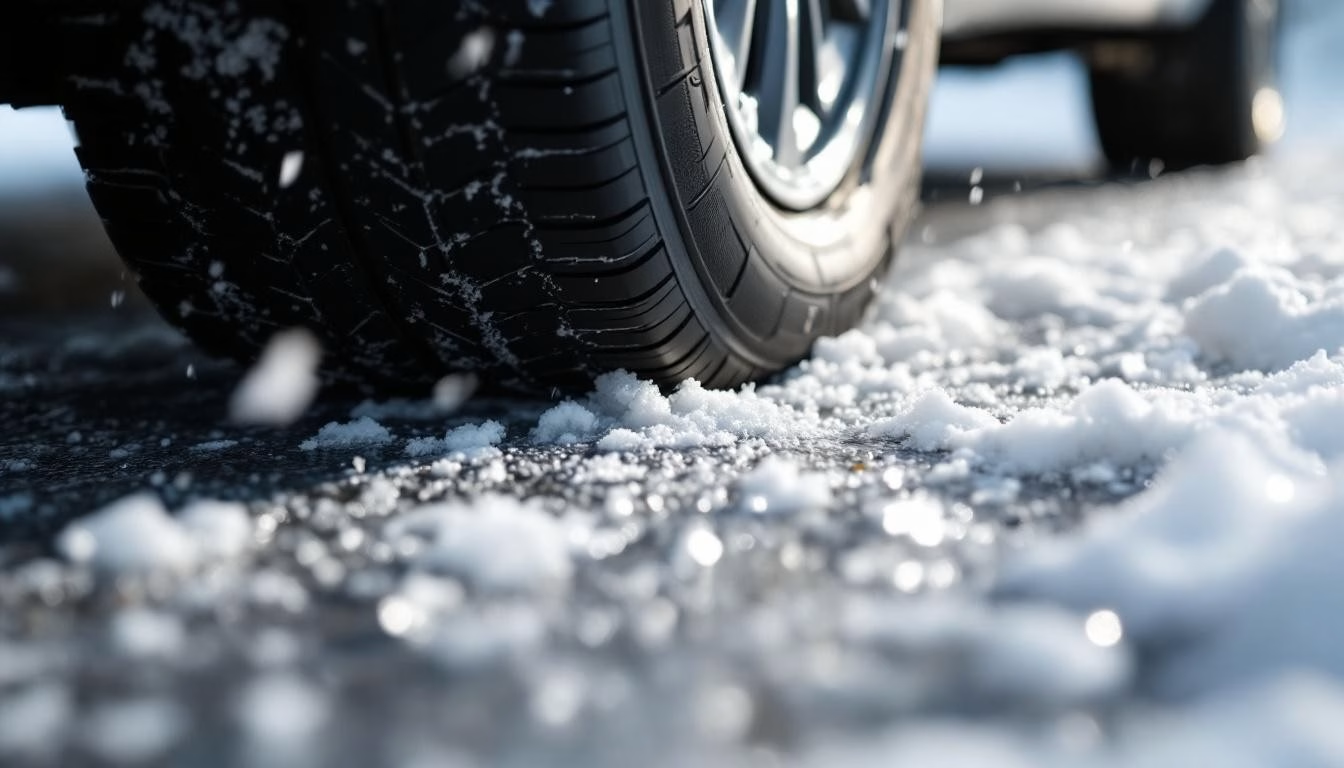Rain transforms familiar roads into hazardous surfaces where even experienced drivers face serious challenges. Weather-related crashes account for nearly 1.2 million accidents annually in the United States, with wet pavement being the leading factor.
At floridadetscourse.com, we know that mastering safe driving in rain requires specific techniques and proper vehicle preparation. The right knowledge can mean the difference between arriving safely and becoming another statistic.
What Makes Rain So Dangerous for Drivers
Rain creates three specific hazards that transform routine drives into high-risk situations. The National Highway Traffic Safety Administration reports that 75 percent of weather-related crashes occur on wet pavement, with 47 percent happening during active rainfall. These numbers reflect the deadly combination of visibility loss, traction reduction, and hydroplaning that drivers face in wet conditions.
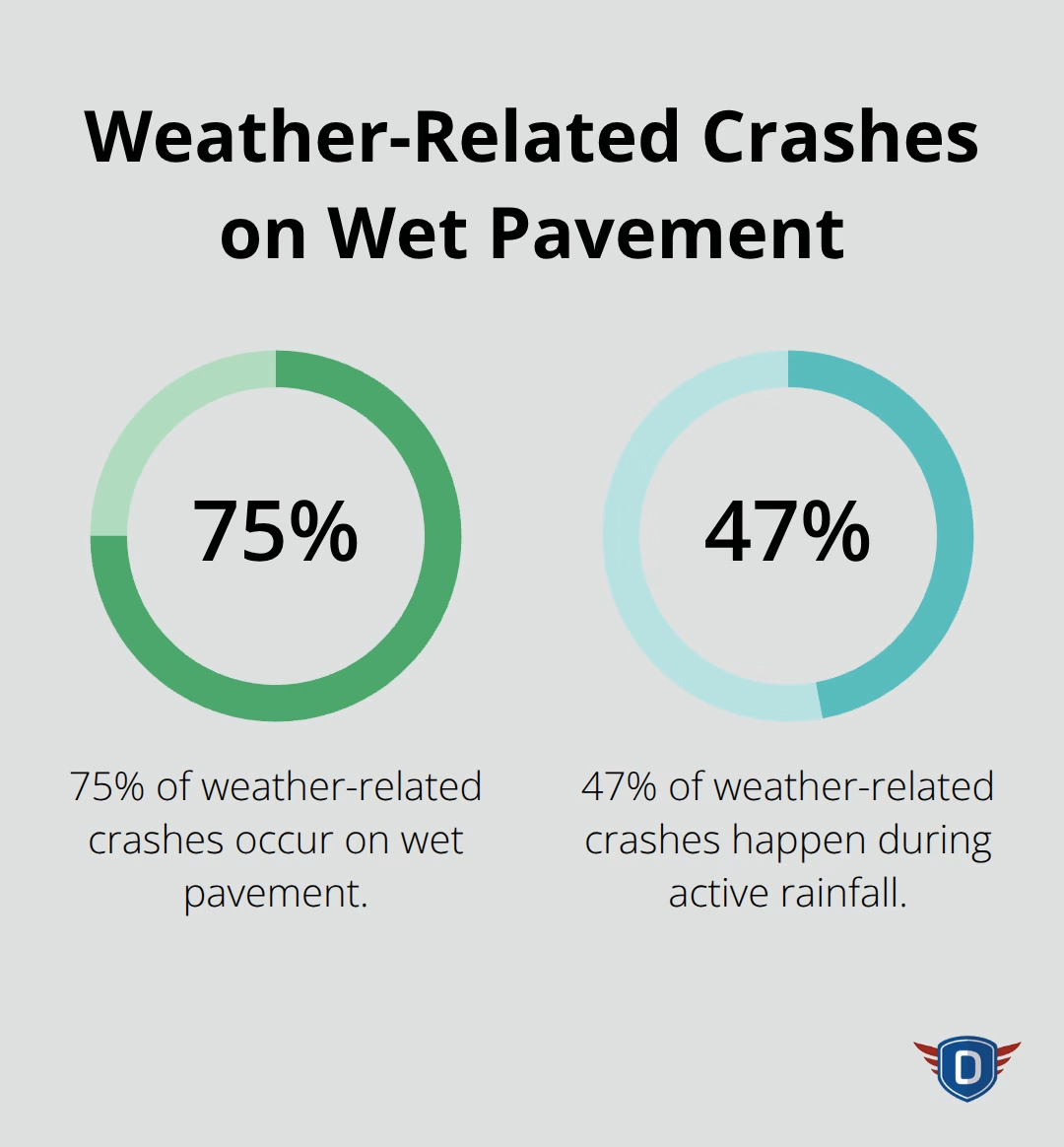
Visibility Drops to Dangerous Levels
Heavy rainfall reduces visibility to just a few car lengths ahead, which makes it impossible to spot hazards, brake lights, or lane markings in time. The Federal Highway Administration found that rain decreases freeway speeds by 3 to 17 percent in heavy conditions, yet many drivers still maintain unsafe speeds. Your windshield wipers can only handle so much water before streaks begin to form, and even functional wipers create blind spots during each sweep cycle.
Traction Vanishes When You Need It Most
Wet pavement cuts tire grip by up to 50 percent compared to dry conditions, with the first 10 to 15 minutes of rainfall being the most treacherous. During this period, accumulated oils mix with water to create an extremely slippery surface. The Department of Transportation data shows that stopping distances double on wet roads compared to dry pavement conditions.
Hydroplaning Strikes at Surprisingly Low Speeds
Water accumulation of just one-tenth of an inch can cause hydroplaning at speeds as low as 35 mph, according to AAA research. New tires lose road contact at these speeds, while worn tires with insufficient tread depth hydroplane even more easily. Standing water in road depressions, near storm drains, and in highway grooves creates invisible traps where your vehicle can suddenly lose all steering and braking control.
These hazards demand specific techniques and preparation strategies that go far beyond normal dry-weather driving practices.
How to Drive Safely When Rain Hits
Rain demands specific techniques that differ completely from normal driving habits. The Federal Highway Administration data shows that drivers should reduce speeds by at least one-third on wet roads, yet most drivers only slow down by 10 to 15 percent. This disconnect explains why speed contributes to 22 percent of fatalities on wet roads compared to 19 percent on dry roads according to the National Highway Traffic Safety Administration.
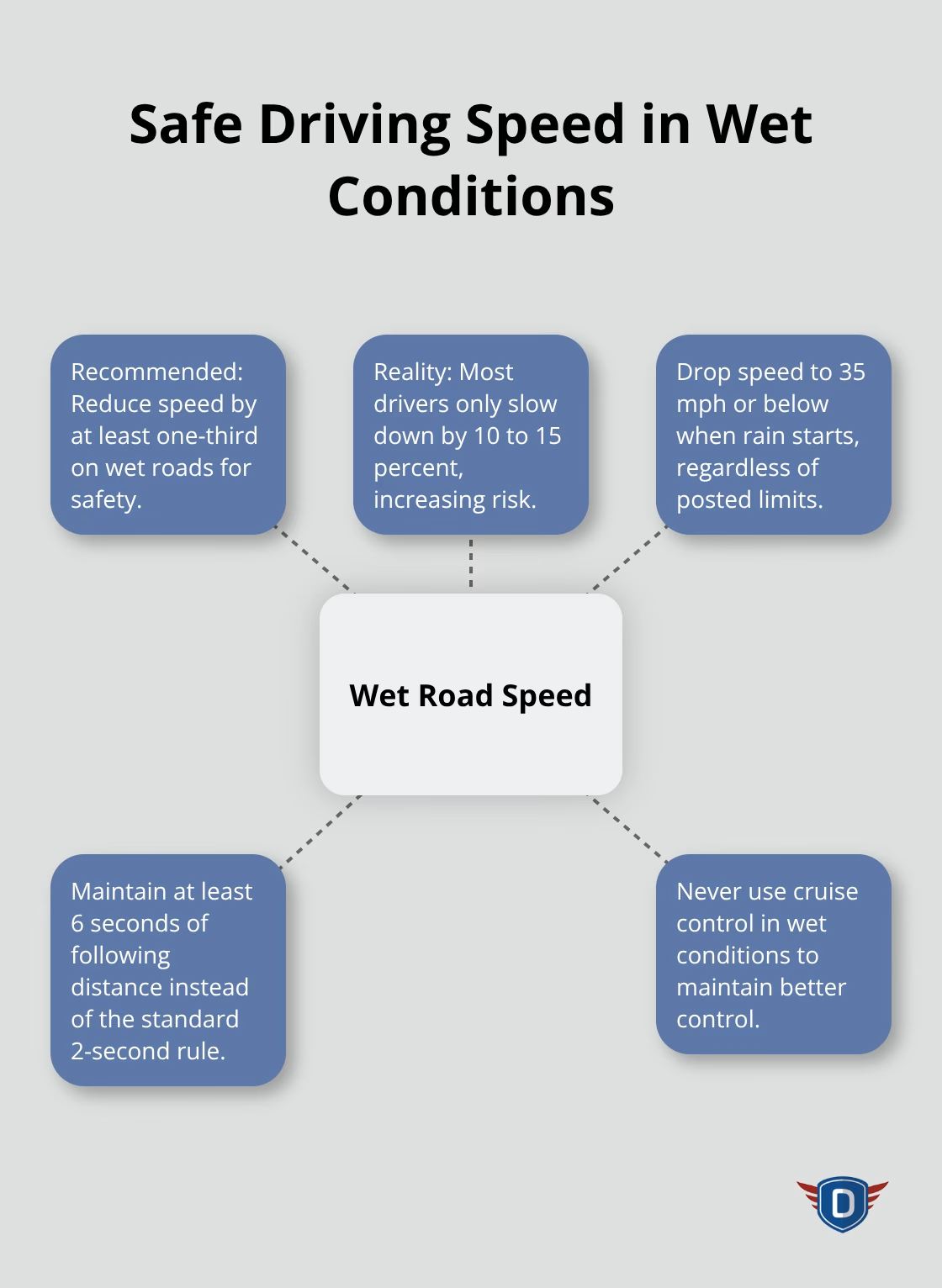
Cut Your Speed More Than You Think
Drop your speed to 35 mph or below when rain starts to fall, regardless of posted speed limits. Research from the Department of Transportation proves that hydroplaning begins at speeds that require continuous tire tread depth monitoring to reduce overall hydroplaning risk, while worn tires lose contact at even lower speeds. The first 15 minutes of rainfall create the most dangerous conditions as oils mix with water, so aggressive speed reduction during this period prevents loss of control. Never use cruise control in wet conditions because it delays your reaction time when hydroplaning occurs.
Triple Your Following Distance
Maintain at least six seconds of distance behind other vehicles instead of the standard two-second rule for dry conditions. Stopping distances are significantly longer on wet pavement compared to dry asphalt, and this extended gap gives you time to react when the car ahead suddenly brakes or loses control. Follow the tire tracks of the vehicle in front of you when possible, as these tracks displace water and provide better traction than untraveled sections of road.
Master Gentle Vehicle Control
Apply brakes gradually and avoid sudden steering inputs that can trigger skids on wet surfaces. Modern anti-lock brake systems work effectively in rain, but they need steady pressure rather than pumping motions. When your vehicle begins to skid, steer gently in the direction you want to go while avoiding the instinct to overcorrect.
Use Your Lights and Wipers Properly
Turn on your headlights immediately when rain begins (California law requires headlight use whenever windshield wipers operate), and this practice improves your visibility to other drivers by up to 500 feet. Replace windshield wiper blades every six months to maintain clear visibility, as worn blades create dangerous streaks that obscure your view of the road ahead.
These techniques work best when your vehicle is properly prepared for severe weather conditions.
Vehicle Preparation Prevents Rain Disasters
Your vehicle becomes your lifeline during rain emergencies, but most drivers skip the maintenance checks that prevent wet-weather failures. Weather-related crashes occur frequently, with over 3,800 people killed and over 268,000 people injured in weather-related crashes each year. Smart drivers perform three specific inspections before rain season hits their area.
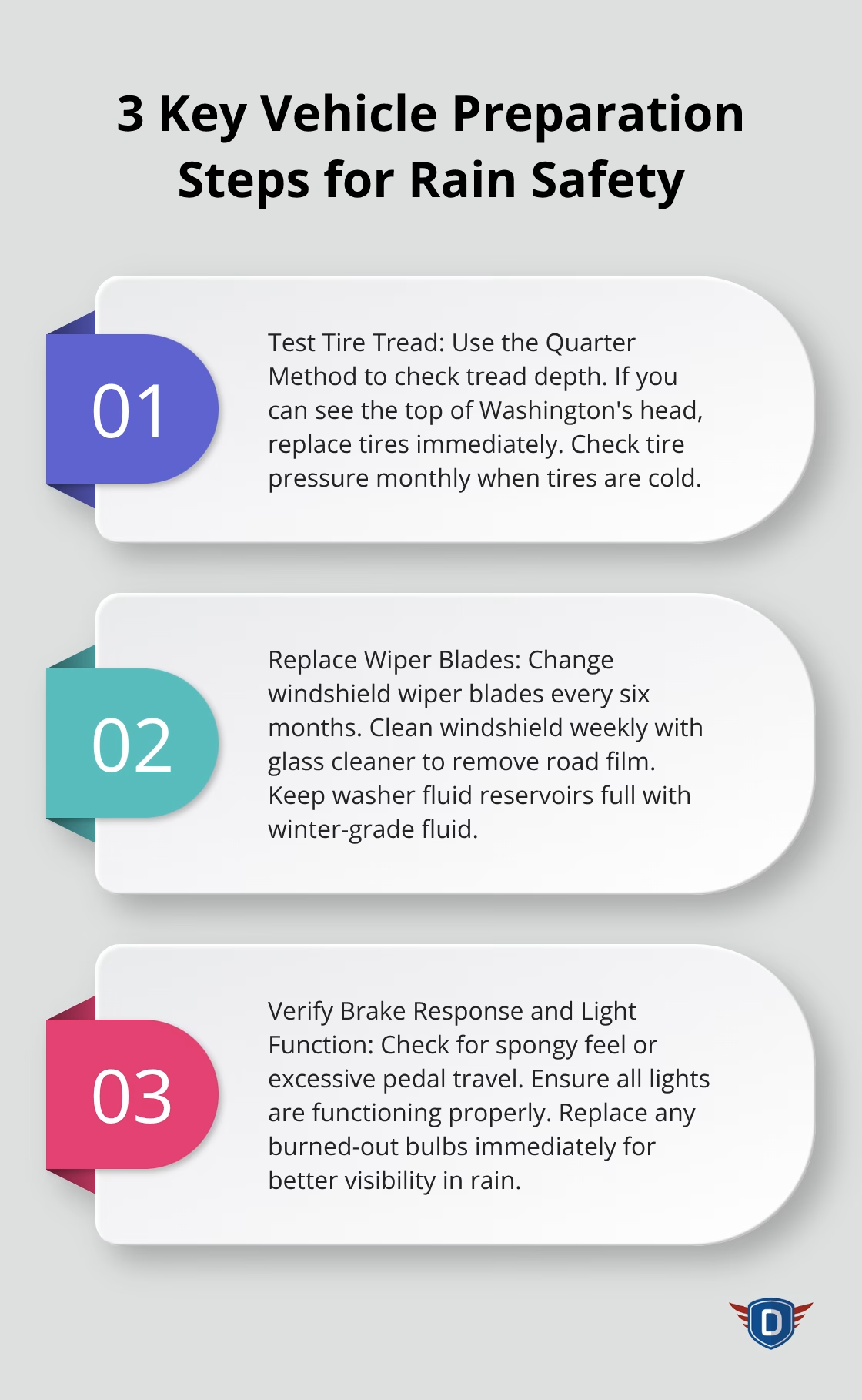
Test Tire Tread with the Quarter Method
Insert a quarter upside down into your tire groove with Washington’s head pointing down. If you can see the top of Washington’s head, your tires need immediate replacement because they lack sufficient tread depth for wet conditions. Proper tread channels water away from the tire contact patch, while worn tires with less than 4/32-inch depth lose grip at speeds above 35 mph.
Check tire pressure monthly when tires are cold (underinflated tires increase hydroplaning risk by reducing the contact area between tire and road). The spare tire requires the same attention since emergency tire changes during storms create additional hazards.
Replace Wiper Blades Every Six Months
Windshield wiper blades deteriorate faster than most drivers realize, with rubber compounds that break down from heat, cold, and UV exposure. Streaking, skipping, or chattering sounds indicate blade failure that creates dangerous blind spots during rainfall. Quality replacement blades cost less than $30 per pair but provide clear visibility that prevents accidents worth thousands in damage.
Clean your windshield weekly with glass cleaner to remove road film that reduces wiper effectiveness. Check that washer fluid reservoirs stay full with winter-grade fluid that won’t freeze.
Verify Brake Response and Light Function
Press your brake pedal firmly while parked to check for spongy feel or excessive travel that indicates brake system problems. Wet conditions demand immediate brake response, so any delay or weakness requires professional inspection before you drive in rain. Walk around your vehicle monthly to verify that headlights, taillights, brake lights, and turn signals function properly.
Other drivers need these visual cues to see you through heavy rainfall. Replace burned-out bulbs immediately since reduced visibility during inclement weather creates significant safety challenges. Proper vehicle preparation works alongside defensive driving techniques to keep you safe in challenging weather conditions.
Final Thoughts
Safe driving in rain requires three fundamental skills: speed reduction, vehicle preparation, and continuous practice. The statistics show clear results – with over 860,000 wet weather accidents annually, drivers who ignore these principles face serious consequences. Speed reduction remains the most effective technique for rain-related crash prevention.
Drop to 35 mph or below when conditions deteriorate to maintain control when hydroplaning threatens. Maintain six-second distances to provide the extra time that wet pavement demands. Vehicle maintenance prevents emergencies before they develop through monthly tire pressure checks, quarterly tread inspections, and biannual wiper replacements (these steps cost far less than accident repairs).
Education transforms nervous rain drivers into skilled operators who handle challenging conditions with confidence. We at floridadetscourse.com provide comprehensive driver education programs that teach advanced safe driving in rain techniques through personalized instruction. Prepared drivers who apply proper techniques consistently arrive safely at their destinations regardless of weather conditions.



